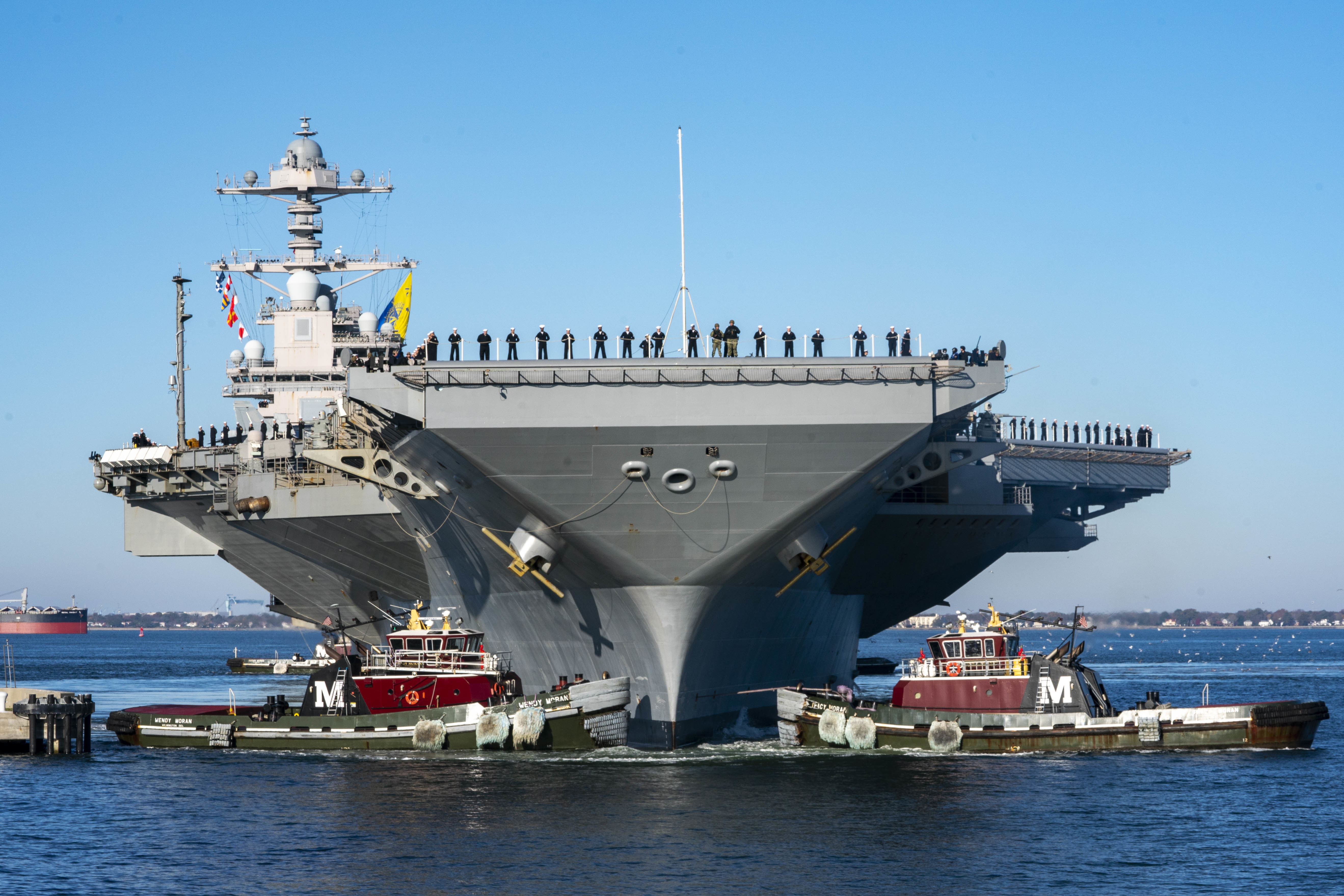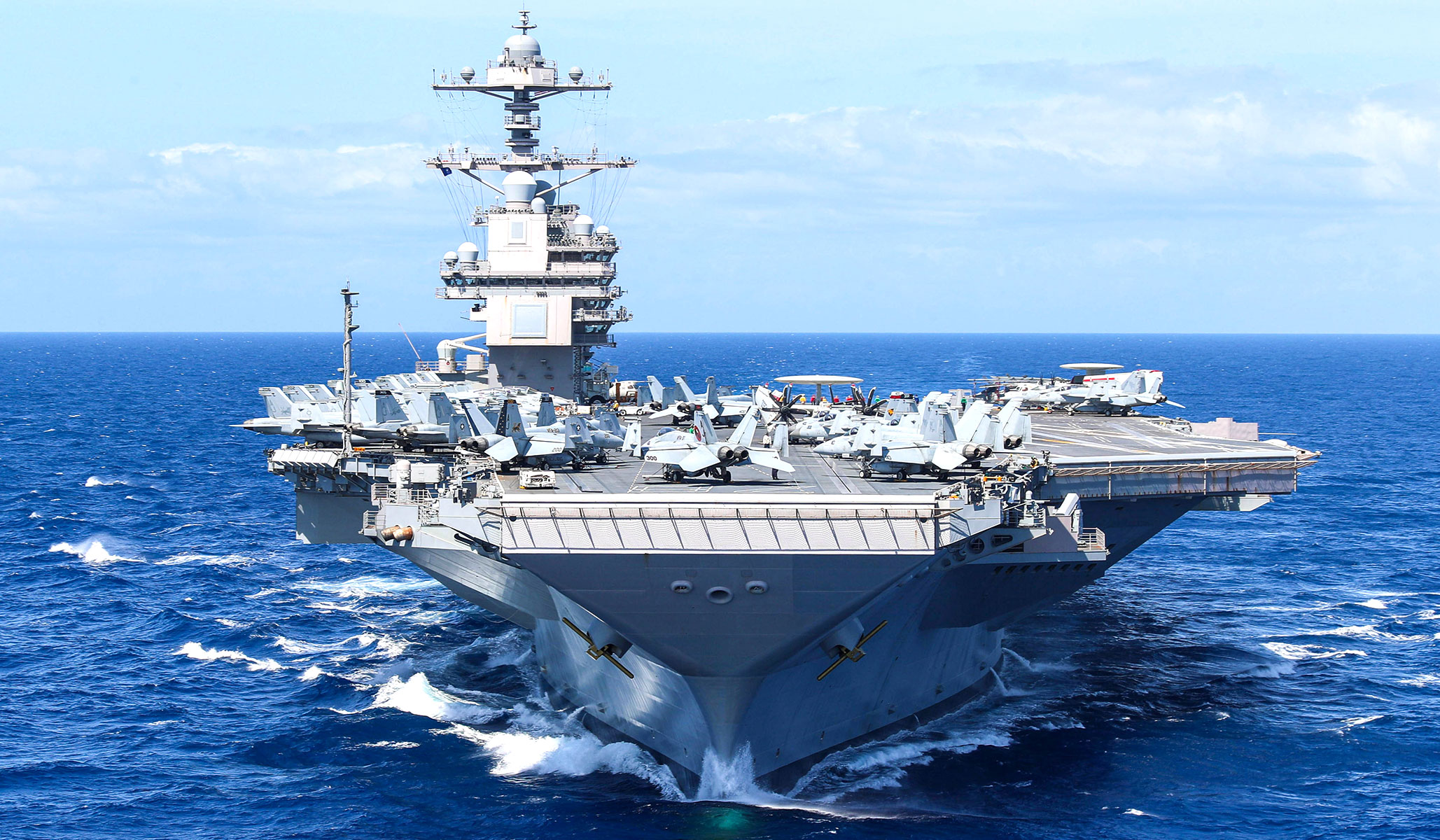Revolutionizing Naval Power: The USS Ford's Cutting-Edge Technology and Engineering
The United States Navy's latest aircraft carrier, the USS Ford, is a marvel of modern engineering and a testament to the nation's unwavering commitment to naval power. With its state-of-the-art design and cutting-edge technology, the USS Ford is poised to revolutionize the way the US Navy operates on the high seas. In this article, we'll take a closer look at the USS Ford's impressive capabilities and explore what makes it a game-changer for the US Navy.
The USS Ford is the newest aircraft carrier in the US Navy's fleet, with a length of 1,106 feet and a displacement of over 100,000 tons. Its massive size is a testament to the Navy's commitment to building vessels that can withstand the harsh conditions of the ocean and support a wide range of military operations. With a crew of over 5,000 personnel, the USS Ford is a self-contained city at sea, equipped with advanced systems and facilities to support the health, safety, and well-being of its crew.
One of the most significant upgrades of the USS Ford is its electromagnetic aircraft launch system (EMALS). This advanced system replaces the traditional catapults and arresting gear used on older aircraft carriers, allowing for faster and more efficient aircraft operations. EMALS also enables the USS Ford to launch aircraft at night and in bad weather, a major improvement over its predecessors. Additionally, the USS Ford is equipped with the Electromagnetic Aircraft Elevator (EMAE), which allows for vertical takeoff and landing (VTOL) aircraft to operate from the carrier.
The USS Ford is also equipped with advanced stealth technology, designed to reduce its radar cross-section and make it harder to detect by enemy radar systems. This is achieved through the use of advanced materials and design techniques, such as radar-absorbent materials (RAM) and curved surfaces. The USS Ford's stealth capabilities are critical in today's modern warfare, where the ability to remain undetected is a major advantage.
Design and Layout
The USS Ford's design and layout are centered around its mission to provide a mobile airbase for the US Navy's aircraft squadrons. The ship's deck is divided into several distinct areas, each with its own specific purpose. The flight deck is the largest area on the ship, covering over 1,000 feet and accommodating up to 60 aircraft. The island is located aft of the flight deck and houses the ship's command center, navigation, and communication systems.
The USS Ford also features a number of advanced systems, including:
- Advanced combat management systems (ACMS)
- Integrated logistics and supply systems (ILSS)
- Shipboard communications systems (SCS)
- Advanced radar systems (ARS)
Aircraft Operations
The USS Ford is designed to operate a wide range of aircraft, from fighter jets to helicopters and unmanned aerial vehicles (UAVs). The ship's flight deck is equipped with advanced arresting gear and landing rails, allowing for safe and efficient takeoff and landing operations.
Some of the key aircraft that will operate from the USS Ford include:
- F-35C Lightning II fighter jets
- F/A-18E/F Super Hornet multirole fighters
- SH-60 Seahawk helicopters
- MQ-4C Triton UAVs
The USS Ford's advanced aircraft handling systems, including the EMALS and EMAE, enable the ship to launch and recover aircraft quickly and efficiently. This is critical in modern warfare, where the ability to respond quickly to changing circumstances is a major advantage.
Avionics and Electronics
The USS Ford's avionics and electronics systems are designed to provide the ship's aircrews with real-time information and critical data. The ship's advanced sensors and radar systems enable aircrews to detect and track enemy aircraft and missiles, and provide vital support for ground and air operations.
Some of the key avionics and electronics systems on the USS Ford include:
- Advanced radar systems (ARMS)
- Electro-optical and infrared sensors (EOTS)
- Advanced communication systems (ACS)
- Advanced navigation systems (ANS)
Combat Systems
The USS Ford is equipped with advanced combat systems, designed to provide the ship's aircrews with the capabilities to engage enemy targets and defend the ship against aerial threats. The ship's combat systems include:
- Advanced gun systems (AGS)
- Anti-submarine warfare (ASW) systems
- Anti-air warfare (AAW) systems
- Advanced electronic warfare (EW) systems
The USS Ford's combat systems are designed to operate in conjunction with other US Navy ships and aircraft, providing a comprehensive air and missile defense system.
Command and Control
The USS Ford's command and control systems are designed to provide the ship's commanders with real-time information and critical data. The ship's advanced communication systems enable commanders to coordinate with other US Navy ships and aircraft, and receive vital support from shore-based command centers.
Some of the key command and control systems on the USS Ford include:
- Advanced combat management systems (ACMS)
- Integrated logistics and supply systems (ILSS)
- Shipboard communications systems (SCS)
- Advanced navigation systems (ANS)
Performance and Capabilities
The USS Ford is designed to provide the US Navy with a highly advanced and capable aircraft carrier. The ship's performance and capabilities include:
- Advanced propulsion systems (ADPS)
- Advanced power generation systems (APGS)
- Advanced cargo handling systems (ACHS)
- Advanced combat systems (ACS)
The USS Ford's advanced propulsion systems, including the two shaft azimuth thrusters and two bow thrusters, enable the ship to operate at speeds of up to 30 knots and travel distances of over 6,000 nautical miles.
Power Generation and Distribution
The USS Ford's power generation systems include two nuclear reactors, providing a reliable and long-lasting source of power. The ship
Aaron Hernandez Wife Net Worth 2024
Tara Reid Husband
Hisashi Ouchi Real Hospital Po
Article Recommendations
- Janice Nichole Rivera
- Jordan Maxwell Howid Heie
- Dale Jarrett
- Competition Rank Tracker
- Orlando Brown
- Benicioel Toro Relationships
- Janiceejanice
- Karlye Taylor
- Girl Meets Farm Cancelled
- Aishahofeyd Fans



